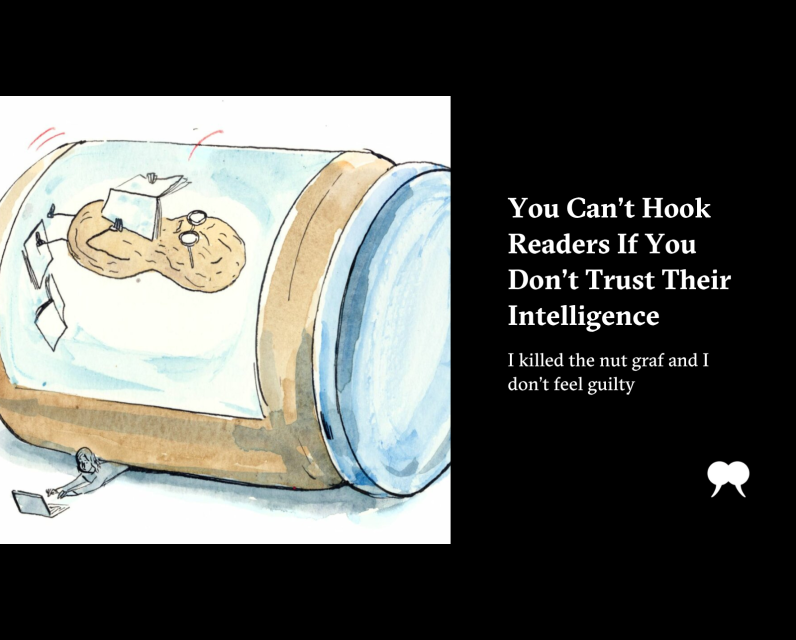You Can’t Hook Readers If You Don’t Trust Their Intelligence

When I began as editor-in-chief in 2023, I was in a hurry to break ground. We set up a contributing writer program and rolled out regional bureaus across the country. But the best thing I did was what I had everyone stop doing. I killed the nut graf.
If you don’t recognize the term, you’re not alone. It’s industry jargon, meaningless outside a newsroom. A portmanteau of “nutshell paragraph,” the nut graf is the thesis statement—typically near the beginning—that tells a reader what the piece is really about and why it matters. It answers the “so what?” up front.
Used judiciously, a nut graf builds trust. It’s a signal that the piece has a direction, that you should stick with it. Handled wrong, it becomes a trust-killing move. A clunky interruption that says: we don’t think you can figure this out on your own. And if nut grafing becomes chronic, you create a culture of underestimating readers, of teaching them patience isn’t valuable. Or, worse, that style shouldn’t be an experience in itself. If you really want to know what a piece is about, you shouldn’t find it spelled out in paragraph three. You should feel it by the end.
Once you allow that anxiety into an operation, once editors grow afraid that a reader will be unmoored by the slightest jolt, it corrupts everything. Faced with an inventive draft, you tack on boilerplate context, wrecking an interesting structure and sucking all the mystery out of a sly narrative buildup. Unusual or offbeat phrasing? Spike it. Writers, to save themselves the headache of frustrating editing sessions, begin to pre-emptively build their pieces around the idea of a “hook” (and send their more signature, thought-provoking work elsewhere).
That’s how things grow templated, cookie cutter, rote. Sentences become less rhetorically immersive, flatter. The nut graf also dumbs down the larger project of journalism, since everyone forgets how to hold the audience’s attention the hard way: through storytelling.
Magazine writing, at its best, is thinking out loud, but with evidence. It exists because it lets us do two things: unpack complexity in real time and pull readers into the middle of that process. For years, however, The Walrus prioritized the credentialism of the method—how much ground a story covered, how many sources it contained—over what was actually said and how it was said. That’s not to dismiss investigative rigour but to recognize that the most compelling work depends not only on the accumulation of facts but on writers with something astute, provocative, or beautifully articulated to share. And sometimes, to get there, you have to test the form.
So here’s my nut graf. Journalism is a chemical reaction. As editors, our job is to help writers preserve the point of contact with a subject, and what ignites from it, in fresh language. If we do it right, that reaction carries over to the person at the other end of those sentences, who is drawn to a voice, and stays. And going by our growing numbers, online and in print, we’re now giving a lot more of you reasons to keep reading. Long live the thing I killed.
The post You Can’t Hook Readers If You Don’t Trust Their Intelligence first appeared on The Walrus.
Comments
Be the first to comment